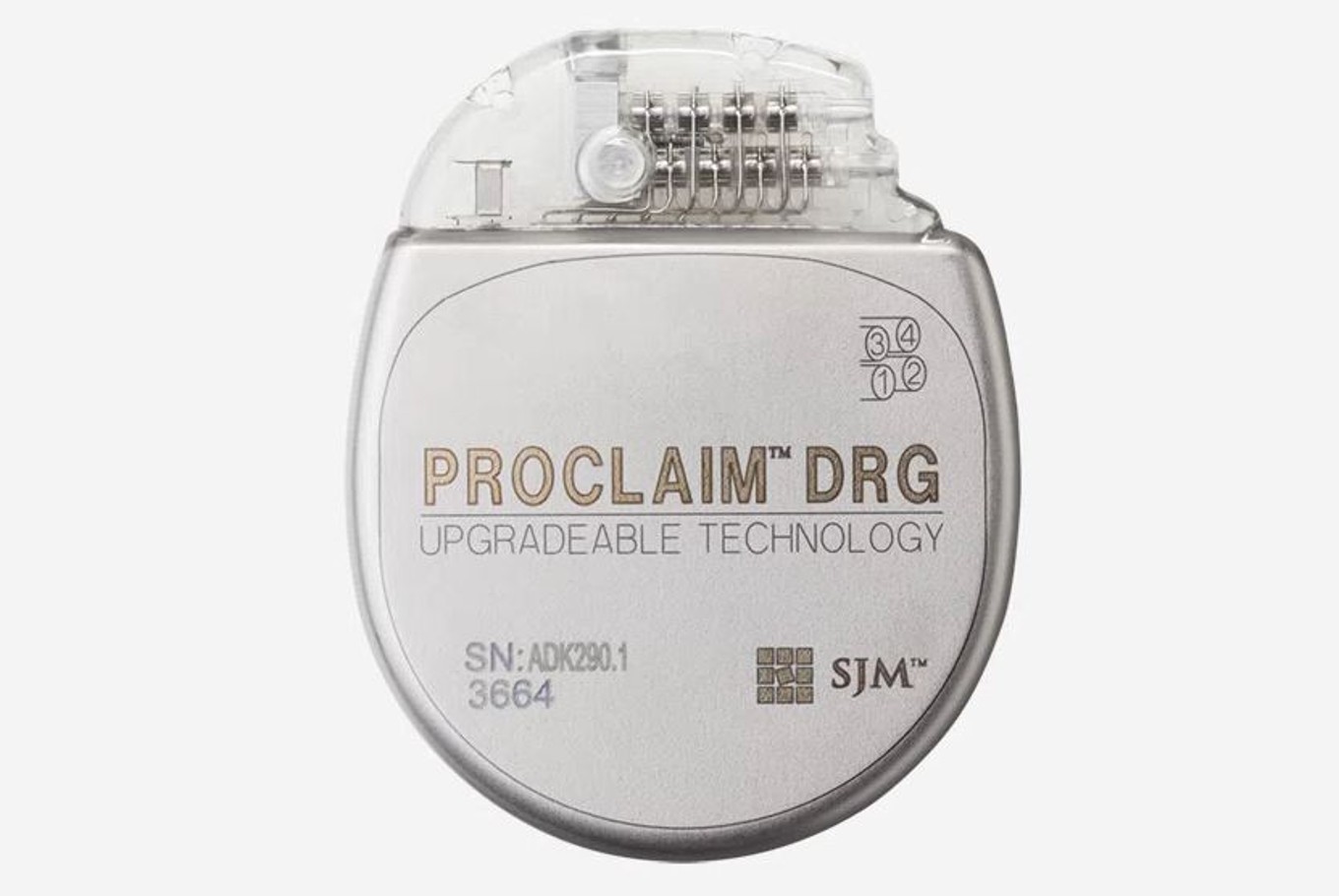Popular Reads
Top Results
Can't find what you're looking for?
View all search resultsPopular Reads
Top Results
Can't find what you're looking for?
View all search resultsSpinal-cord implants to numb pain emerge as alternative to pills
For millions of Americans suffering from debilitating nerve pain, a once-overlooked option has emerged as an alternative to high doses of opioids: implanted medical devices using electricity to counteract pain signals the same way noise-canceling headphones work against sound.
Change text size
Gift Premium Articles
to Anyone
F
or millions of Americans suffering from debilitating nerve pain, a once-overlooked option has emerged as an alternative to high doses of opioids: implanted medical devices using electricity to counteract pain signals the same way noise-canceling headphones work against sound.
The approach, called neuromodulation, has been a godsend for Linda Landy, who was a 42-year-old runner when a foot surgery went awry in 2008. She was diagnosed with complex regional pain syndrome, a condition dubbed the suicide disease by doctors: The pain is so unrelenting that many people take their own lives.
Last November, Landy underwent surgery to get an Abbott Laboratories device that stimulates the dorsal root ganglion, a spot in the spine that was the pain conduit for her damaged nerves. A year after getting her implant, called DRG, she’s cut back drastically on pain pills.
“The DRG doesn’t take the pain completely away, but it changes it into something I can live with,” said Landy, a mother of three in Fort Worth, Texas. She’s now now able to walk again and travel by plane without using a wheelchair. “It sounds minor, but it’s really huge.”
Crackdown on opioids
Recent innovations from global device makers like Abbott to smaller specialists such as Nevro Corp. made the implants more powerful and effective. Combined with a national crackdown on narcotics and wanton pain pill prescriptions, they are spurring demand for implants.
The market may double to $4 billion in 10 years, up from about $1.8 billion in the U.S. and $500 million in Europe today, according to health-care research firm Decisions Resources Group.
“There was a big stigma around this when it first came out,” said Paul Desormeaux, a Decisions Resources analyst in Toronto. “The idea of sending an electrical signal through your nervous system was a little daunting, but as clinical data has come out and physicians have been able to prove its safety, there has been a big change in the general attitude.”
Read also: Scientists may have found a cure for pain from a broken heart
Linda Landy and family. (Bloomberg/File)At least 50 million adults in the U.S. suffer from chronic pain, according to the Centers for Disease Control and Prevention. Only a fraction of them would benefit from spinal-cord stimulation -- about 3.6 million, according to Decisions Resources -- but those are patients who are often given the highest doses of narcotics. They include people with nerve damage stemming from conditions like diabetic neuropathy and shingles, as well as surgeries.
“There is no question we are reducing the risk of opioid dependence by implanting these devices,” said Timothy Deer, president of the Spine and Nerve Centers of the Virginias in Charleston, West Virginia, a hotbed of the opioid epidemic. “If we get someone before they are placed on opioids, 95 percent of the time we can reduce their need to ever go on them.”
Studies show spinal-cord stimulators can reduce use of powerful pain drugs by 60 percent or more, said Deer, a clinical professor of anesthesiology.
Read More: Tangled Incentives Push Drugmakers Away From an Opioid Solution
Technology breakthroughs that are just now reaching patients came from a better understanding of how pain signals are transmitted within the spinal cord, the main thoroughfare between the command center in the brain and the body.
For some chronic pain patients, the spinal cord runs too efficiently, speeding signs of distress. Stimulators send their own pulses of electrical activity to offset or interrupt the pain zinging along the nerve fibers. They have been available for more than three decades, but until recently their invasive nature, potential safety risks and cost limited demand.
Market leader Abbott
Illinois-based Abbott, with its $29 billion acquisition of St. Jude Medical this year, took the market lead with advances that allow it to target specific nerves and tailor the treatment. Nevro, of Redwood City, California, has rolled out improvement to its Senza system, a best-in-class approach that is safe while getting an MRI and operates without the tingling that often accompanies spinal-cord stimulation.
In the latest devices, which cost $30,000 or more, codes that are running the electrical pulses are more sophisticated. The frequency, rate and amplitude can be adjusted, often by the patients, which allows personalized therapy.
The new implants are also smaller: The surgery is generally an outpatient procedure with minimal post-operative pain and a short recovery. They have longer battery life, reducing the need for replacement. And patients can try out a non-invasive version of the equipment before getting a permanent implant.
“This is really a defining moment in what we can do to impact the lives of people who suffer from chronic pain,” said Allen Burton, Abbott’s medical director of neuromodulation. “We can dampen the chronic pain signal and give patients their lives back.”
Medtronic Plc, which pioneered the technique but ceded the lead in recent years, is now working on next-generation devices. The company recently gained approval for the smallest pain-management implant, Intellis. In development are devices that can detect pain waves and adjust automatically, said Geoff Martha, executive vice president of Medtronic’s restorative therapies group.
“A self-correcting central nervous system -- that’s the panacea. That’s the ultimate goal,” Martha said. “It could take a huge bite out of the opioid problem.”












